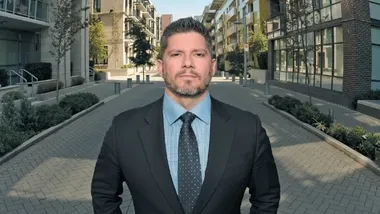In my recent post outlining Council's approval of the EcoDensity Charter and Initial Actions I referenced that two new rezoning policies approved by Council (Actions A-1 and A-2) may give Vancouver the highest green requirements for private-sector building design and large site design in North America. Here are these two policies that are in effect as of May 13, 2008.
In my recent post outlining Council's approval of the EcoDensity Charter and Initial Actions I referenced that two new rezoning policies approved by Council (Actions A-1 and A-2) may give Vancouver the highest green requirements for private-sector building design and large site design in North America. Here are these two policies that are in effect as of May 13, 2008.
Are there greener standards or requirements out there for private sector development? Is your city going further in some areas? Are you working on different approaches, particularly in the performance based realm? If so, please let me know - we very much want to stay aware of where we stand.
|
Rezoning Policy for Greener Buildings That it be Council Policy that all rezonings for buildings that meet the minimum requirements to participate in the LEEDTM for New Construction (NC) program, be required to establish designs that would achieve a minimum equivalent of LEEDtm Silver, with a minimum of 3 optimize energy performance points, 1 water efficiency point and 1 storm water point. Buildings that are not eligible to participate in LEEDTM NC due to form of development shall achieve BuiltGreen BC GoldTM with a score of Energuide 80, or an equivalent achievement in green design. The City will negotiate an equivalent green standard for buildings that are ineligible to participate in either LEEDTM or BuiltGreenTM BC. The application of this policy shall emphasize approaches that use green design practices to reduce energy need before the application of green energy technologies. This policy also applies to Heritage Revitalization Agreements (HRAs) where density is being increased. As with rezonings, HRAs often have both heritage aspects and new development aspects. For heritage components in either HRAs or rezonings, the LEEDTM equivalency requirement will not directly apply, however reasonable design efforts shall be made to improve green performance where appropriate while respecting heritage aspirations and promoting heritage retention. This policy will apply to any new applications for rezoning or HRA received after May 13, 2008. Staff shall undertake consultation and education with the development industry, and report back to Council with recommendations, with the intent of raising the LEEDTM and BuiltGreen BC equivalency requirements in this policy to LEEDtm Gold and BuiltGreen BC Platinum on January 1st, 2010, with continued efforts to move to a more performance-based approach for green buildings policy. |
|
Rezoning Policy for Greener Larger Sites (excerpt) That it be Council Policy for all rezonings that involve land generally two acres or more, in addition to the minimum requirements for Greener Buildings in Action A-1, that the City will require the following:
Consideration of these will be influenced by the site's size, context, proposed uses, opportunities and constraints. Not all site sizes and circumstances allow for the same considerations. This policy applies to both residential and non-residential rezonings including commercial, industrial, and institutional. Appropriate heights and densities are determined through the site-specific rezoning planning process, with public consultation, and options are related to the type of land use, size of site, urban design, neighbourhood context, etc. The greener site requirements will be re-evaluated, and updated at regular intervals to reflect market evolution, advancements in technology, and progressive City targets that move toward goals such as carbon neutral new construction. |

Planetizen Federal Action Tracker
A weekly monitor of how Trump’s orders and actions are impacting planners and planning in America.

Chicago’s Ghost Rails
Just beneath the surface of the modern city lie the remnants of its expansive early 20th-century streetcar system.

Amtrak Cutting Jobs, Funding to High-Speed Rail
The agency plans to cut 10 percent of its workforce and has confirmed it will not fund new high-speed rail projects.

Ohio Forces Data Centers to Prepay for Power
Utilities are calling on states to hold data center operators responsible for new energy demands to prevent leaving consumers on the hook for their bills.

MARTA CEO Steps Down Amid Citizenship Concerns
MARTA’s board announced Thursday that its chief, who is from Canada, is resigning due to questions about his immigration status.

Silicon Valley ‘Bike Superhighway’ Awarded $14M State Grant
A Caltrans grant brings the 10-mile Central Bikeway project connecting Santa Clara and East San Jose closer to fruition.
Urban Design for Planners 1: Software Tools
This six-course series explores essential urban design concepts using open source software and equips planners with the tools they need to participate fully in the urban design process.
Planning for Universal Design
Learn the tools for implementing Universal Design in planning regulations.
Caltrans
City of Fort Worth
Mpact (founded as Rail~Volution)
City of Camden Redevelopment Agency
City of Astoria
City of Portland
City of Laramie



























